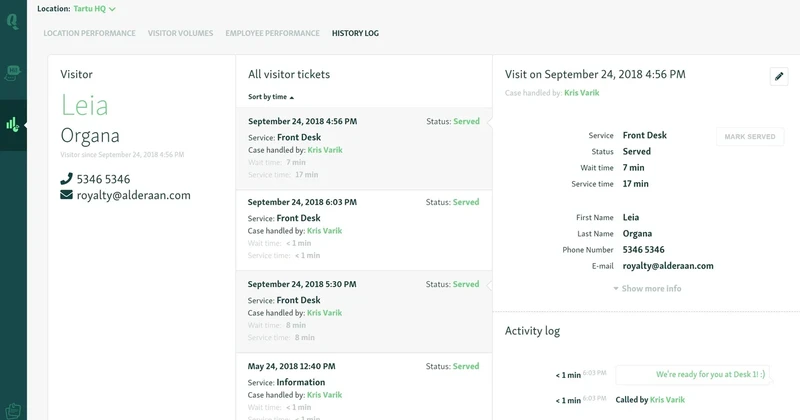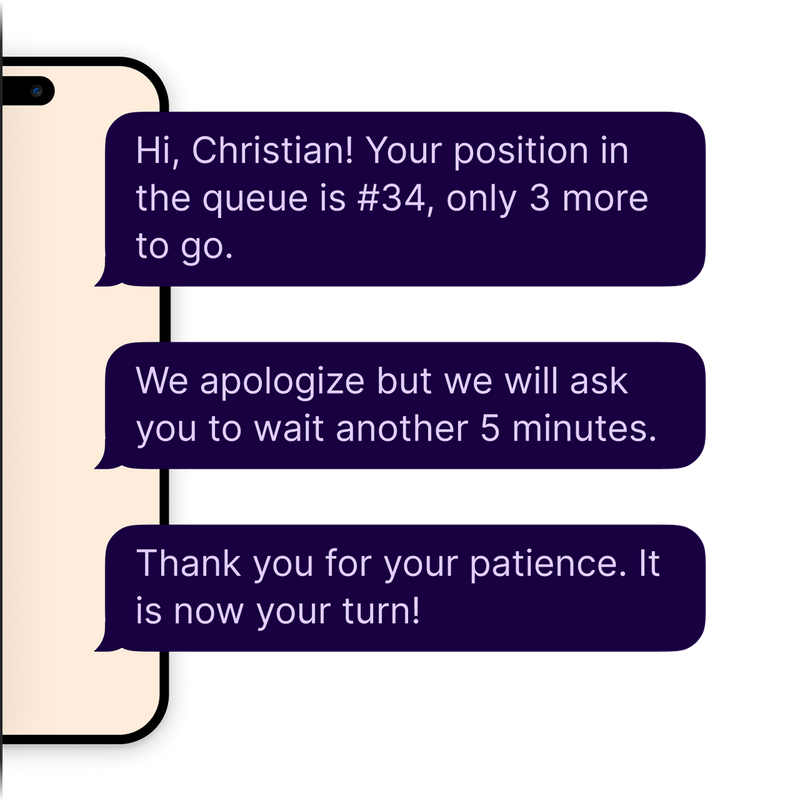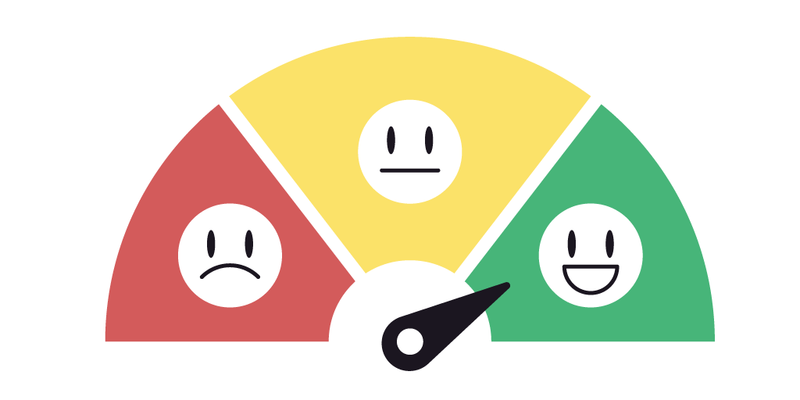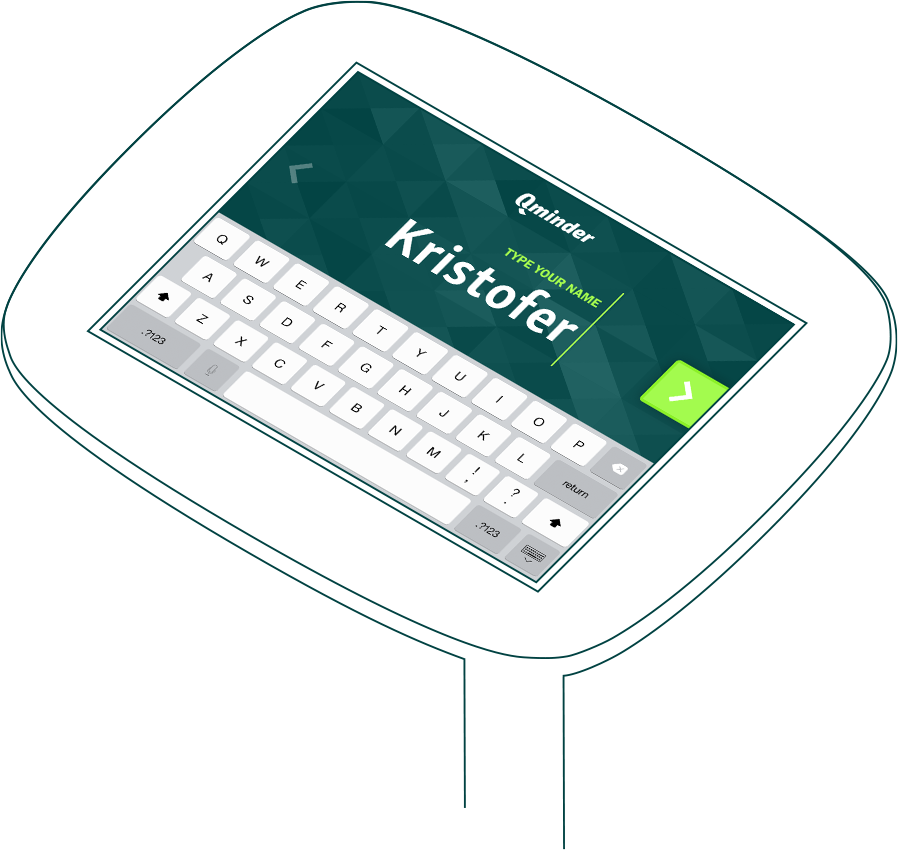Nobody enjoys waiting, especially when it comes to healthcare. Long hospital wait times aren't just inconvenient as they can be stressful, costly, and even harmful to patient outcomes.
Whether it’s a crowded emergency room or a backed-up front desk, the time patients spend waiting often becomes a silent source of dissatisfaction and risk.
As of early 2024, the national median emergency department (ED) visit time in the United States was approximately 2 hours and 43 minutes. That’s nearly three hours of uncertainty, discomfort, and lost productivity.
In this blog, we’ll look at how these delays affect more than just schedules—and how queue management systems can ease the pressure, improve efficiency, and create a better experience for both patients and staff.
The Hidden Cost of Hospital Wait Times
Long patient wait times don’t just affect comfort—they directly impact how people perceive their care. When patients feel like their time isn’t valued, satisfaction drops fast, and that can have serious consequences for healthcare providers.
1. Patient Satisfaction Suffers
When patients wait too long, they don’t just get frustrated—they start questioning the quality of care altogether.
A study by healthcare engagement platform Vitals found a direct link between wait times and physician ratings. Doctors with five-star reviews had average wait times of 12 minutes and 56 seconds, while those with one-star ratings kept patients waiting over 33 minutes.
The takeaway? Patients reward prompt service and penalize delays, even if the clinical care is the same.
Perception plays a huge role here. Long waits signal poor coordination, disorganization, or even a lack of respect for patients' time. And while the care may be top-notch, the experience starts to feel second-rate before the visit even begins.
2. Financial Losses and No-Show Risks
Long hospital wait times don’t just frustrate patients—they cost real money.
When delays stretch too long, 30% of patients walk out without ever being seen, and 20% end up switching providers altogether. Every missed appointment translates into wasted staff time, unused resources, and lost revenue.
No-shows, often triggered by long or unpredictable waits, create ripple effects across scheduling and staffing. In response, some providers double-book appointments, but this only pushes more patients into the backlog, degrading service quality even further.
There’s also a hidden opportunity cost. Studies show that 20% of patients are willing to pay extra for faster service. That’s not just about convenience—it’s a sign of unmet demand that smarter queue management could easily capture.
3. Staff Burnout and Workflow Breakdown
Hospital wait times don’t just impact patients—they wear down staff too.
When front-line teams are overwhelmed by long queues, they’re forced to juggle check-ins, updates, and questions all at once. This constant multitasking under pressure increases the risk of errors and slows down service across the board.
Paper-based or outdated systems only add to the chaos, creating bottlenecks where simple tech could offer relief. Over time, the stress takes its toll—burnout sets in, job satisfaction drops, and turnover rises.
All of this adds up to a fractured workflow and a diminished patient experience. Efficient hospital queue systems help ease this burden and let staff focus on care, not crowd control.
You might also like - Long Waiting Times Cost You Sales
How Queue Systems Improve the Experience
Healthcare queue management systems go beyond scheduling to manage the full patient journey, from check-in to treatment. By streamlining workflows, reducing uncertainty, and enhancing communication, they create a smoother, faster, and more human experience for both patients and staff.
1. Real-Time Queue Visibility
Appointment-only systems often break down the moment something unpredictable happens—like a late arrival or a rush of walk-ins. Queue management softwares offer something traditional scheduling can’t: live visibility into patient flow. With real-time data, staff can see exactly who’s waiting, how long they’ve been there, and what’s causing delays.
For patients, seeing live updates on a waiting room TV reduces the “unknowns” of waiting. And for administrators, it means making smarter decisions before lines grow out of control. This added visibility can reduce perceived wait times by up to 35%, simply by keeping people informed.

What it helps with:
Identifying service bottlenecks as they develop
Adapting staffing levels on the fly
Smoothing out the flow between departments
Freeing up staff from constant status updates
Pro Tip: Set up queue displays in key areas like reception, labs, and billing—visibility doesn’t just ease anxiety, it improves traffic control across the board.
2. Self Check-In with iPad Kiosks
Digital check-in systems like Qminder lets patients take the first step on their own—no clipboard, no spelling names aloud. With iPad kiosks, visitors can confirm personal details, update medical info, and join the queue with minimal staff involvement. It’s a faster, cleaner alternative to paper-based or verbal check-ins.

Hospitals using kiosk solutions see significantly faster check-ins and fewer data entry errors, streamlining the intake process and improving accuracy from the start.
What it helps with:
Shortening lines at the reception desk
Reducing pressure on front-desk staff
Allowing patients to check in discreetly and confidently
Keeping data consistent across departments
Pro Tip: Pair kiosks with multilingual support to serve diverse patient populations without adding extra staff.
3. Automated Patient Routing
With healthcare queue management systems that include automated routing, patients are seamlessly directed to the right service point or specialist—no need for staff to manually guide them or sort through priorities on the fly. Compared to manual triage setups, which can slow things down and increase room for error, automated routing brings structure to what is often a chaotic process.
Hospitals using smart routing tools can reduce internal delays and keep patient flow steady without constant oversight.
What it helps with:
Prioritizing urgent cases without disrupting overall flow
Preventing service overlap or bottlenecks in high-traffic areas
Adapting instantly to staff availability and department load
Minimizing wait time between registration and care
Pro Tip: Combine automated routing with queue insights to dynamically adjust traffic as real-time conditions change.
4. Visit History and Personalization
Modern healthcare queue management systems often integrate seamlessly with electronic medical records (EMRs) to instantly pull up a patient’s visit history, preferences, and notes.

This enables staff to deliver personalized care without making patients repeat themselves, improving continuity and reducing frustration. By having relevant info at their fingertips, healthcare providers can shorten appointment times and enhance the overall patient experience.
Key benefits include:
Faster check-ins with pre-filled patient information
Reduced redundancy in patient questioning
Tailored treatment based on past visits and preferences
Increased patient trust and loyalty through personalized service
Studies show personalized care can boost patient satisfaction scores and reduce average appointment durations, helping hospitals serve more patients efficiently.
Pro Tip: Use visit history data to anticipate patient needs and streamline workflows across departments.
Also read - How to Improve Patient Satisfaction in Hospitals
5. Improved Staff Coordination
Healthcare queue systems provide staff with real-time service dashboards that display patient flow, service status, and bottlenecks. This visibility helps teams coordinate better, allocate resources efficiently, and respond proactively before delays escalate.
Instead of constantly reacting to crises, staff can anticipate busy periods and balance workloads, leading to smoother operations and less burnout.
Additional benefits include:
Clear communication channels reduce missteps and confusion
Faster response to unexpected surges in patient volume
Enhanced ability to prioritize urgent cases
Streamlined handoffs between departments
Hospitals using real-time staff location services coordination tools have reported a significant increase in staff productivity, helping them do more with less and improve patient care quality.
Pro Tip: Equip your staff with mobile alerts linked to queue status for instant updates wherever they are.
6. Better Communication with Patients
Keeping patients informed throughout their visit is crucial for reducing anxiety and improving their overall experience. Patient queue systems use customer messaging and digital displays to update patients on their wait times, queue position, and any delays.

This transparency reduces frustration and prevents patients from leaving prematurely due to uncertainty.
Additional advantages include:
Allows patients to wait comfortably offsite or in their cars
Reduces crowding in waiting areas, improving safety and comfort
Builds trust by showing the hospital values patient time
Helps manage patient expectations realistically
Facilities that implement real-time communication tools see significant drops in walkouts and complaints, ultimately fostering a more positive reputation and patient loyalty.
Pro Tip: Customize messages with estimated wait times and next steps to keep patients engaged and reassured.
7. Actionable Analytics for Operations
Appointment scheduling systems gather detailed data on patient flow, peak hours, and staff performance. This information helps hospital administrators make informed decisions to optimize staffing, reduce bottlenecks, and improve overall efficiency.
Instead of relying on guesswork, hospitals can use real-time insights to proactively address issues before they escalate.

Key benefits include:
Identifies recurring slowdowns and their causes
Supports targeted training and resource allocation
Enables forecasting for busy periods and special events
Facilitates continuous improvement through data-driven reviews
Hospitals leveraging queue analytics often see up to a 50.7% reduction in no-shows and cut average wait times by 5 - 6 minutes, directly enhancing patient satisfaction and operational efficiency.
Pro Tip: Regularly review analytics dashboards to spot trends early and adjust workflows before wait times increase.
Related read - The Benefits of QMS for Hospital Administration
Queue Systems vs. Traditional Appointment Scheduling
Traditional appointment scheduling sets a plan, but it doesn’t adapt well to the real-time chaos of healthcare. Queue systems bridge that gap, giving staff better control and patients a smoother experience. Here's how they compare on key capabilities:
Feature Capability | Traditional Scheduling | Queue Systems |
Handling Walk-Ins | ❌ Struggles to handle unscheduled patients. | ✅ Smoothly integrates walk-ins without disruption. |
Adapting to Surges | ❌ No dynamic response to delays or high volume. | ✅ Adjusts queues in real time to manage patient flow. |
Real-Time Visibility | ❌ Limited or no insight into current wait times. | ✅ Dashboards show live queue data and staff status. |
Patient Communication | ❌ Patients are uninformed about delays or wait order. | ✅ Sends SMS updates and shows queue status on screens. |
Check-In Efficiency | ❌ Manual check-ins create bottlenecks. | ✅ Kiosks and mobile check-in streamline the process. |
Personalization | ❌ Staff often lack access to patient history at check-in. | ✅ Visit data is available to personalize service. |
Operational Insights | ❌ No data to analyze performance or patient flow. | ✅ Tracks wait times, service volume, and staff efficiency. |
Patient Satisfaction | ❌ Long waits and poor communication lead to walkouts. | ✅ Reduced wait times and transparency boost satisfaction. |
Read more - Walk-in vs. Appointment Scheduling: Choosing the Best Approach
Addressing Common Concerns from Hospital Administrators
Even with the growing urgency to improve wait times and optimize patient flow, some hospital leaders hesitate to adopt hospital queue systems. Let’s address the most common objections—and why they don’t hold up.
Objection: “We already have appointment scheduling.”
Traditional appointment systems are great for managing expected demand—but healthcare rarely goes as planned. Walk-ins, late arrivals, no-shows, and patient surges throw off carefully laid schedules.
Queue systems like Qminder complement scheduling by managing real-time demand, automatically adjusting to what’s happening on the ground. That means smoother traffic flow, less patient frustration, and fewer bottlenecks when things don’t go according to plan.
Objection: “It’s too complicated to implement.”
Many assume that a new system means months of training, new hardware, and IT headaches. Not true. Solutions like Qminder are designed for healthcare settings where time and resources are tight.
Most platforms are cloud-based, require little to no hardware, and come with user-friendly interfaces that staff can learn in a day.
You can start small—one desk, one department—and scale based on results.
Objection: “It’s not worth the investment.”
Every minute your staff spends juggling patients manually is a cost. Every patient who walks out due to long waits is lost revenue. Hospital queue systems help reduce no-shows, speed up patient handling, and prevent costly errors.
Hospitals using them report higher patient satisfaction, increased throughput, and notable gains in staff productivity. Even small improvements in flow can save thousands per month, making patient queue systems one of the lowest-risk, highest-return tech investments you can make.
Case Study: North Kansas City Hospital
Before Qminder, North Kansas City Hospital relied on handwritten paper logs to manage patient queues. Front desk staff manually recorded names and called out patients in order, which became overwhelming as patient volume increased. This outdated process led to longer waits, disorganized lines, and frustrated staff.
To modernize operations, the hospital implemented Qminder. They introduced iPad patient check-in kiosks, a virtual queueing system, and real-time service dashboards to replace manual tracking. The setup was quick and user-friendly, which played a major role in their decision.
The results were immediate:
Wait times dropped from 10 to 15 minutes to just 2 to 3 minutes
Complaints about check-in delays virtually disappeared
Patients embraced the self-check-in system with minimal assistance
Staff could easily adjust queues and prioritize patients without confusion
By treating wait time as part of the care experience rather than an afterthought, North Kansas City Hospital turned a daily bottleneck into a competitive advantage.
Take the Next Step Toward Smarter Patient Care
Long hospital wait times don’t just test patience, but also erode trust, increase no-shows, drain revenue, and burn out staff.
But the solution isn’t rushing care. It’s rethinking how it’s delivered. Queue management systems offer a smarter, patient-centered approach that brings clarity, coordination, and speed to the front lines of care.
From check-in to discharge, the right tools can transform waiting into a seamless part of the experience. Hospitals looking to modernize should explore proven solutions like Qminder to reduce delays and improve satisfaction.
Ready to improve patient flow? Start your journey with Qminder today.
Queue systems are scalable and work just as well for small clinics as they do for large hospitals. Even with lower patient volume, they help reduce bottlenecks, improve efficiency, and enhance the patient experience. Small clinics benefit from better time management and happier patients.
Modern hospital queue systems manage both walk-ins and scheduled patients by assigning them places in a virtual queue. This helps staff prioritize based on urgency and availability. It ensures smoother flow without double-booking or confusion.
Most queue systems are designed with ease of use in mind and require minimal training. Staff can typically learn how to manage queues, view wait times, and assist patients in just a few sessions. User-friendly interfaces speed up onboarding and reduce errors.






